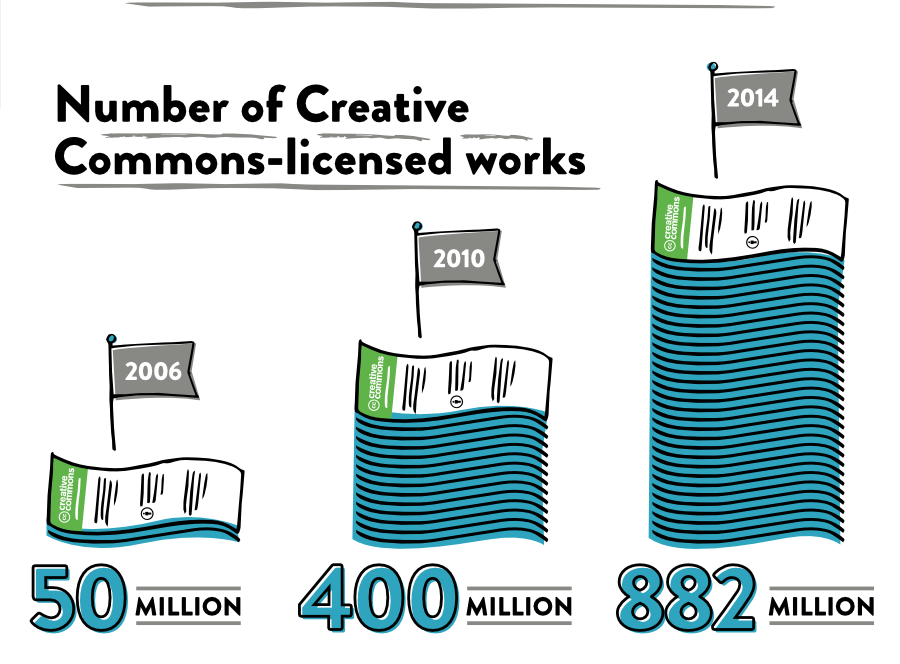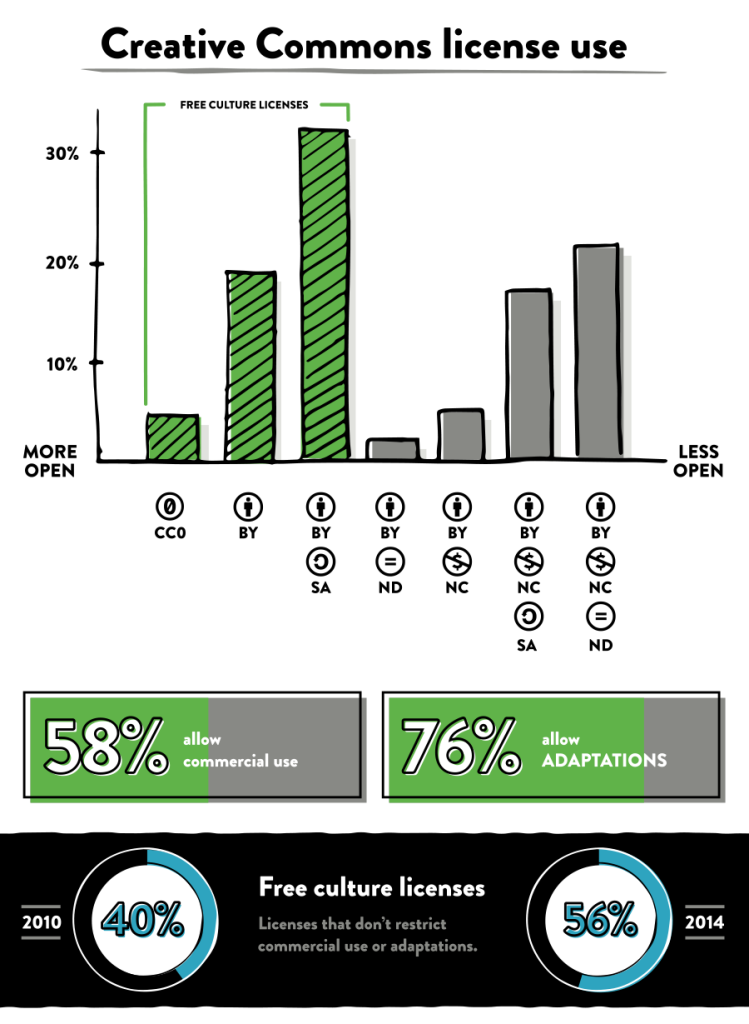
In the Creative Commons Age, What Can You Sell?
Open and shareable content reigns online, and fighting it is a losing game. But is there room to sell some of your digital content while keeping most of it free? Here's a little strategy to get you thinking.
So … how much content did you give away for free this year?
Really, I’m curious. About a year ago, I wrote a piece considering the nature of sharing content online and suggested that associations could help make things better for the internet by openly sharing some of the content they create, while still keeping credit for it.
Now, we have a clear example of what an open strategy looks like. Last week, the Bill & Melinda Gates Foundation announced that it would require the researchers it funds to share their findings via open-access journals, using a Creative Commons Attribution 4.0 Generic License.
The move, which gives Creative Commons—a recipient of a Gates Foundation grant, by the way—a huge leg up in the academic space, comes as CC is celebrating its 12th anniversary. Last month, the licensing body published a report explaining what it has managed to do in just a dozen years.
“Distributing creative work used to be all about scarcity: the value of an album, book, or movie came from the fact that paying was the only way to get a copy,” Creative Commons CEO Ryan Merkley wrote on Boing Boing last week. “Creators used to ask themselves, ‘How do I protect my work?’ Today, they’re asking, ‘How do I keep my work from getting lost in the noise?'”
In other words, the openness of creativity is encouraging a creativity of its own—a creativity in business models.
Nearly 1 Billion Served
The report is worth diving into as a way to see just how far the concept, and the nonprofit that shepherds it, has come.

In 2006, around 50 million CC items existed. Now we’re up to 882 million and should top a billion sometime next year. Most users release their content under a CC-BY-SA license, which requires both attribution and a promise by the content creator that the resulting product is shared for free, or a CC BY-NC-ND license, which allows the content to be shared but not modified or used for commercial purposes.

That’s a huge amount of growth in a relatively short period of time. Much of it has been driven by sites like Flickr, Wikipedia, Scribd, and YouTube. CC’s success in these mainstream venues has paved the way for its spread.
But challenges still linger more than a decade in. The report highlights a fight within the academic space: The International Association of Scientific, Technical, and Medical Publishers introduced its own sector-specific alternative to Creative Commons, a decision that proved controversial and earned some notable association critics.
And in a move that may discourage some from licensing their photos, Yahoo decided it would let people buy freely licensed photos on Flickr and put them on a physical canvas, without—you know—asking the original owners [subscription] if they were OK with that. Because, under certain CC licenses, they technically don’t have to.
It’s a reminder that while CC is hugely successful, it’s not by any means perfect—yet.
The secret here is that you give away most of the eggs, but hold on to the golden ones. The most valuable things are going to be worth the cost to the right person.
New Adventures in Hi-Fi
You might read this and wonder: So if we give away a bunch of our content for free, aren’t we throwing away the golden goose? Maybe not. The secret here is that you give away most of the eggs, but hold on to the golden ones. The most valuable things are going to be worth the cost to the right person.
The music industry, struggling to make sense of the age of streaming, is trying to figure out this very issue right now. There’s a point when those 200,000 people every year who buy copies of Bat Out of Hell are gonna start listening to Meat Loaf on Spotify instead.
Fortunately, the music industry is a space with people who know a thing or two about creative strategies.
Last month, the retired band R.E.M. threw a bone to its longtime fans: Rather than releasing another compilation disc (they already have four), the band and its manager, Bertis Downs, came up with a unique video project, REMTV, a six-DVD set that features pretty much every appearance the band’s members have ever made on MTV’s numerous programs over the past 33 years.
It’s clever. It ties the band’s history to the history of the network that made them famous. And at $99, it’s not for the fair-weather fans who know “Losing My Religion” but couldn’t tell you the name of the band’s first album. (It’s “Murmur.”)
“It’s a quirky product, yet seen in the context of the band’s history—and the intimate relationship its members maintained with their followers, even at the height of their stardom—it makes sense as a natural evolution of their unorthodox business strategy,” Bloomberg Businessweek‘s Hugo Lindgren noted last week.
A similar approach: For the past year, rocker Jack White has been selling a $400 wood-encased vinyl record set encompassing the well-documented recordings of Paramount Records, an early jazz and R&B music label. He’s about to release a second volume of the record company’s music (also with a $400 price tag, but now with a metal case), leading White to hawk the set on decidedly un-rock venues like CBS This Morning, a show with an audience that might find the Great Depression-era records appealing.
In the grand scheme, White doesn’t have to convince too many folks that it’s worth the $400: If he sells 2,500 copies of the two volumes, that’s a million bucks right there. In a way, both R.E.M. and White are selling a unique experience, something where the value is clear beyond a single shareable item.
Know Your Niche
This isn’t the kind of stuff that comes together overnight. Each of these projects took years to build and aren’t for everyone. But for the right kind of buyer, this stuff is worth every penny.
Associations, with their vast archives and captive audiences, are in a place to build similar niche value—where people are willing to buy a $100 book detailing research relevant to their industry, or $1,000 to purchase training manuals for their offices that can’t be replicated elsewhere. (Or, better, plunk down $2,000 on an industry-relevant conference.) In comparison, the stuff you give away that will make you go viral or that helps build your influence over a part of the world you’re hoping to take over—that content is worth more to you with a Creative Commons license.
So the strategy comes down to this: Give away the content that benefits many; sell the stuff that appeals to the niche. Let people download and share that photo of the celebrity who spoke at your conference, but maybe give the market research a price tag.
It’s the end of the world as we know it, but—really—you should feel fine.
(iStock/Thinkstock)






Comments